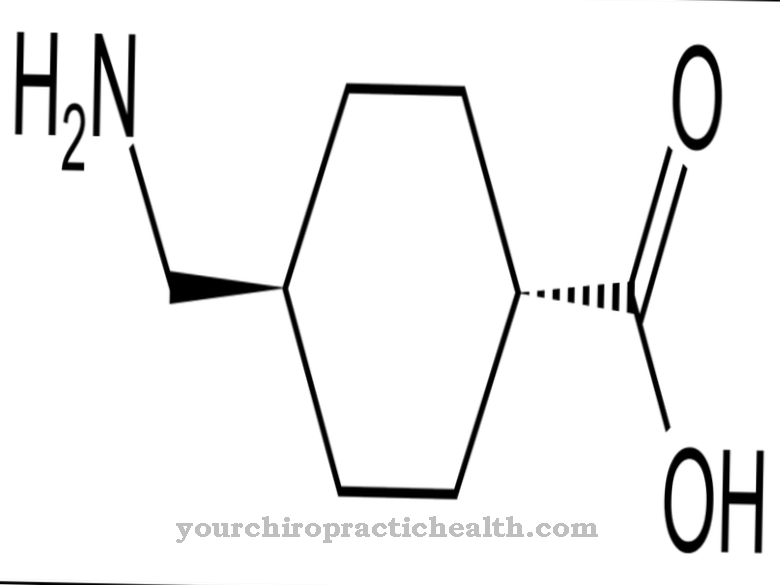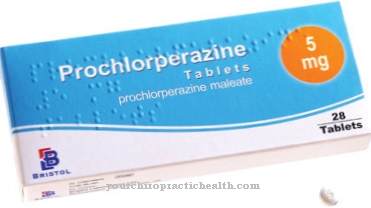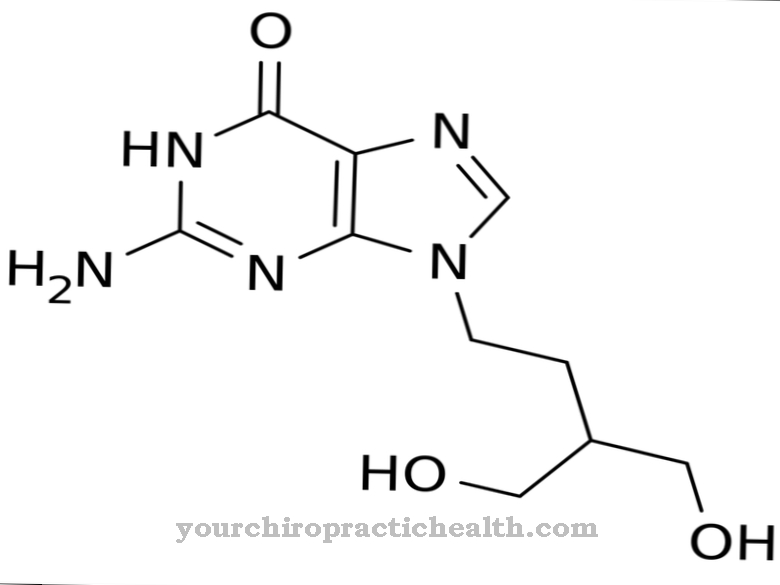Aminophylline is a bronchodilator and vasodilator combination. It is primarily used as an anti-asthmatic for bronchial asthma and chronic obstructive pulmonary disease (COPD).
What is aminophylline?

Aminophylline, as a drug combination of theophylline and ethylenediamine (ratio 2: 1), belongs to the active substance group of methylxanthine derivatives. Theophylline is the physiologically active component, while ethylenediamine primarily increases the solubility. The combination of active ingredients is less potent than pure theophylline and has a shorter duration of action.
Aminophylline is used primarily as an anti-asthmatic or bronchospasmolytic in the case of obstruction of the airways as a result of bronchial asthma or COPD. In the blood, about 60% of the aminophylline is bound to proteins. The plasma half-life is between 7 and 9 hours.
Pharmacological effect
As soon as aminophylline enters the organism, the theophylline is released from the combination of active ingredients and causes the mechanisms of action characteristic of methylxanthine derivatives.
These include in particular its effect as a phosphodiesterase inhibitor (PDE inhibitor) and adenosine receptor blocker. Phosphodiesterase inhibitors inhibit the phosphodiesterase enzymes. Aminophylline is a non-selective PDE inhibitor that does not inhibit specific types of enzymes, but rather several different phosphodiesterases at the same time. The effect is due in particular to the theophylline contained in aminophylline.
This causes vessel dilation (expansion) via the PDE inhibition in the airways and blood vessels.At the same time, aminophylline stimulates diuresis (urine excretion via the kidneys), gastric acid secretion and the central nervous system. Aminophylline increases the intracellular cAMP concentration (cyclic adenosine monosphate), which activates protein kinase A (PKA), which regulates energy metabolism.
The increased cAMP concentration in the tissue also activates the energy metabolism controlled by catecholamine and causes the release of epinephrine. In addition, the synthesis of the leukotrienes involved in inflammatory processes in bronchial asthma and thus the innate immune response is inhibited. As an adenosine antagonist, aminophylline blocks its effect on the receptors on the cell surface of the heart and thus increases the heart rate and the ability to contract.
Medical application & use
Like other theophylline-containing drugs, aminophylline is primarily used to treat bronchial asthma, chronic bronchitis and COPD (chronic obstructive pulmonary disease). It has a relaxing effect on the smooth muscles of the bronchi and pulmonary vessels.
In addition, aminophylline causes the bronchial tubes to expand, stimulates the respiratory muscles and inhibits the release of inflammatory substances within the body. By expanding the bronchi (bronchodilation), the active ingredient leads to a reduction in the bronchial spasms that are characteristic of bronchial asthma and COPD, which cause shortness of breath and coughing. Accordingly, aminophylline is mainly used in the therapy and prophylaxis of respiratory distress due to bronchoconstriction (narrowed airways).
It is particularly suitable for the treatment and prophylaxis of nocturnal asthma symptoms. Aminophylline can also be used in an acute asthma attack. In moderate to severe bronchial asthma, the active ingredient is usually used in combination with beta-2 adrenoceptor agonists and glucocorticoids. In the presence of COPD, however, aminophylline is combined with beta-2 adrenoceptor agonists and anticholinergics.
Since children and smokers excrete the active substance more quickly, aminophylline shows a shorter duration of action in these affected persons. In the case of heart failure, impaired liver or kidney function, pneumonia, viral infections and severe oxygen deficiency, however, the excretion of aminophyllin is slowed. In both cases, the dosage should be adjusted accordingly.
Risks & side effects
As part of drug therapy with aminophylline, insomnia, diarrhea, nausea, heartburn, headache, agitation, increased urination, cardiac arrhythmia, increased blood sugar and tremors can be observed.
In addition, blood uric acid and the creatinine level in the blood are often increased, while the blood calcium concentration is decreased. An overdose can lead to seizures, an acute drop in blood pressure, severe cardiac arrhythmias and gastrointestinal complaints. In the event of hypersensitivity to the active ingredient, after acute myocardium (recent heart attack) or acute cardiac arrhythmias, aminophylline therapy is contraindicated.
The theophylline contained in aminophylline is mainly metabolized (metabolized) via CYP1A2 - an endogenous enzyme that is important for the biotransformation of drugs. The plasma level can therefore vary between individual sufferers. Numerous interactions with other active ingredients are also possible. As a rule, the active ingredient is applied cautiously. In order to avoid overdosing - especially dangerous theophylline intoxication with cramps and cardiac arrhythmias - close checks by the doctor are recommended.



























